I have been working on creating a hexagonal (flat top) grid for a simulation I am working on. I have attempted to work out the distance between the hexagons, from a specified target hexagon.
The solution I have works for most of the time, apart from every odd column from the target hexagon north of the target is shifted up by 1. I know that sounds confusing but I have attached an image to explain what I mean:

As you guys can see, the bottom half of the grid below the target hexagon and every other column above the target Hexagon is correct. I cannot understand why :S
Here is an explanation of the Axial & Cube Co-ords.
http://www.redblobgames.com/grids/hexagons/#coordinates
Here is the code responsible for converting the Axial Co-ords to Cube Co-ords.
public void setQR(int theQ, int theR){
this.q = theQ;
this.r = theR;
this.x = this.q;
this.z = this.r - (this.q - (this.q&1)) /2;
this.y = -(this.x + this.z);
}
And heres the code for working out distance.
FYI, the Hexagons are created from a CentrePoint (CPx, CPy).
private double distance = 0;
public double workOutDistance(Hexagon hexagon, HexagonFood target){
double targetX = target.getCPX();
double targetY = target.getCPY();
double hexagonX = hexagon.getCPX();
double hexagonY = hexagon.getCPY();
double deltaX = (targetX-hexagonX)*-1;
double deltaY = (targetY-hexagonY)*-1;
double deltaXRadius = (deltaX/(SimField.hexSize)/1.5);
double deltaYApothem = (deltaY/(SimField.hexSize/1.155)/2);
hexagon.setQR((int)deltaXRadius, (int)deltaYApothem);
ArrayList<Integer> coords = new ArrayList<>();
coords.add(
Math.abs(hexagon.getX() - target.getX())
);
coords.add(
Math.abs(hexagon.getZ() - target.getZ())
);
coords.add(
Math.abs(hexagon.getY() - target.getY())
);
System.out.println(coords);
distance = Collections.max(coords);
return distance;
}
Can anyone please tell me why this is happening ? Would be greatly appreciated.
EDIT:
After changing Int to Double as suggested by Tim, I get this.
https://i.stack.imgur.com/javZb.png
**
SOLUTION
**
after experimenting with the answers given, This small tweak solves the problem.
changing this..
public void setQR(int theQ, int theR){
this.q = theQ;
this.r = theR;
this.x = this.q;
this.z = this.r - (this.q - (this.q&1)) /2;
this.y = -(this.x + this.z);
}
to this..
public void setQR(int theQ, int theR){
this.q = theQ;
this.r = theR;
this.x = this.q;
if (this.r>0){
this.z = this.r - (this.q - (this.q&1))/2;
}
else {
this.z = this.r - (this.q + (this.q&1))/2;
}
this.y = -(this.x + this.z);
}